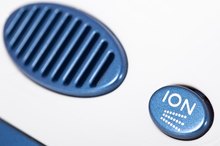Air Bag Dust & Effects on Breathing
Air bags in automobiles are designed to protect the vehicles' passengers, primarily in front-end or near-front-end collisions. They are designed to deploy when an impact's severity reaches the equivalent of a car hitting a brick wall at about 10 miles per hour.
If you are experiencing serious medical symptoms, seek emergency treatment immediately.
Dust Particles Released
The dust particles released when an air bag deploys come from the various chemicals used to make the air bag open and fill with air quickly in the event of an emergency. The main dry-powder chemical, sodium azide (NaN3), ensures that the air bag device works effectively as soon as it is triggered by impact.
Effects of Air Bag Dust
Harmful Effects of Xylene
Learn More
The effects of the air bag dust can vary from person to person 1. Some people may not have a problem with the chemicals released while others will. Air bag dust often causes irritation to mucus membranes and air passages, which has serious effects on breathing. The most common symptoms from air bag dust are throat irritation and itchy, watery eyes. Both of which should be flushed with water and will heal after contact has been broken with the dust. In rarer cases, air bag dust can be extremely severe or even fatal.
- The effects of the air bag dust can vary from person to person 1.
- Air bag dust often causes irritation to mucus membranes and air passages, which has serious effects on breathing.
Effects on Breathing
If sodium azide is breathed in, there can be serious effects. The deeper it's breathed in, the more severe the side effects will be. When possible, it is important to try to cover your mouth and nose in the event of an air bag deployment so as not to breathe in the dust. By getting out of the vehicle as soon as possible after air bag deployment, you can try to avoid serious effects from the air bag dust.
If airbag dust gets into the lungs, it can cause serious irritation that will lead to slower and shallower breathing. It may become difficult to catch your breath or take in a deep breath. Ingesting or absorbing even a small amount of the chemical can cause an average adult to fall into a coma-like state. If larger amounts are ingested, it can shut the body down completely.
- If sodium azide is breathed in, there can be serious effects.
- When possible, it is important to try to cover your mouth and nose in the event of an air bag deployment so as not to breathe in the dust.
Related Articles
References
- ResQMed: Chemical Propellant Airbags
- Nelson HS. Immunotherapy for house-dust mite allergy. Allergy Asthma Proc. 2018;39(4):264-272. doi:10.2500/aap.2018.39.4145
- Kim JY, Rhee CS, Cho SH, Choe G, Kim DY, Han DH. House dust mite sublingual immunotherapy in children versus adults with allergic rhinitis. Published online ahead of print, 2020 Jun 13. Am J Rhinol Allergy. 2020;1945892420931713. doi:10.1177/1945892420931713
- Asthma and Allergy Foundation of America. Dust mite allergy. Updated October 2015.
- Babe KS Jr, Arlian LG, Confer PD, Kim R. House dust mite (Dermatophagoides farinae and Dermatophagoides pteronyssinus) prevalence in the rooms and hallways of a tertiary care hospital. J Allergy Clin Immunol. 1995;95(4):801-805. doi:10.1016/s0091-6749(95)70121-4
- Illinois Department of Public Health. Mites affecting humans.
- Lee E, Lee SY, Park MJ, Hong SJ. TNF-α (rs1800629) polymorphism modifies the effect of sensitization to house dust mite on asthma and bronchial hyperresponsiveness in children. Published online ahead of print, 2020 May 20. Exp Mol Pathol. 2020;115:104467. doi:10.1016/j.yexmp.2020.104467
- Boberg E, Johansson K, Malmhäll C, Weidner J, Rådinger M. House Dust Mite Induces Bone Marrow IL-33-Responsive ILC2s and TH Cells. Int J Mol Sci. 2020;21(11):E3751. Published 2020 May 26. doi:10.3390/ijms21113751
- Weitzel T, Makepeace BL, Elliott I, Chaisiri K, Richards AL, Newton PN. Marginalized mites: Neglected vectors of neglected diseases. PLoS Negl Trop Dis. 2020 Jul 23;14(7):e0008297. doi: 10.1371/journal.pntd.0008297. PMID: 32701946; PMCID: PMC7377360.
- Atta AH, Amer RM, Mesbah AE, Khater MW. Sublingual Versus Subcutaneous Immunotherapy as regards Efficacy and Safety in Respiratory Allergic Patients. Egypt J Immunol. 2019;26(2):65-78.
- American Lung Association. Dust mites. Updated July 1, 2019.
Writer Bio
Based in Los Angeles, Kelly Lynn Marie has been a freelance writer since 2003. She holds a Bachelor of Science degree in theatre and a Master of Arts degree in writing from Northern Michigan University. She has been published in "Lake Superior Magazine" and won a playwriting competition in 2010 in Los Angeles.









